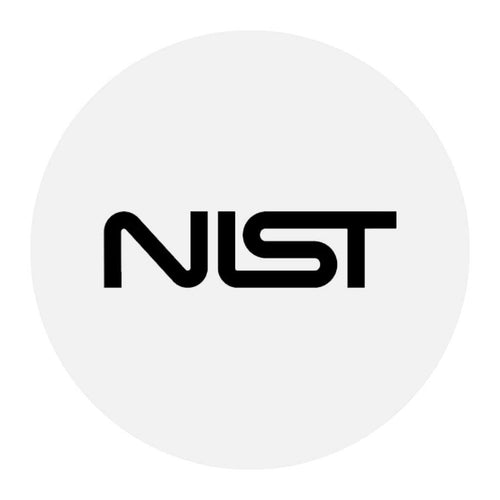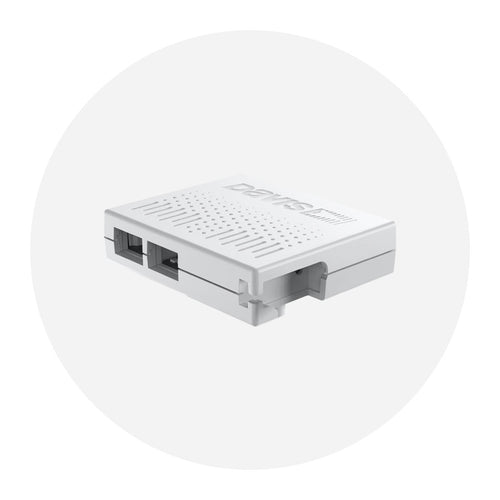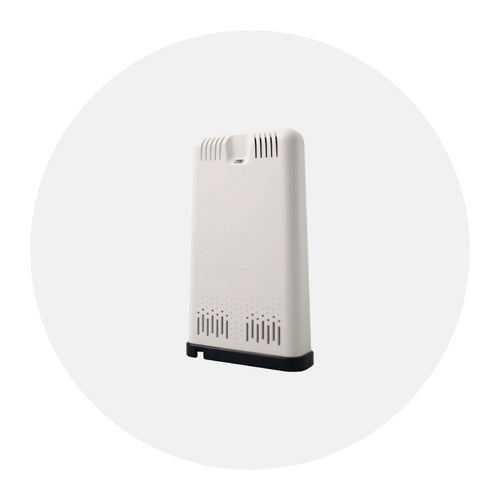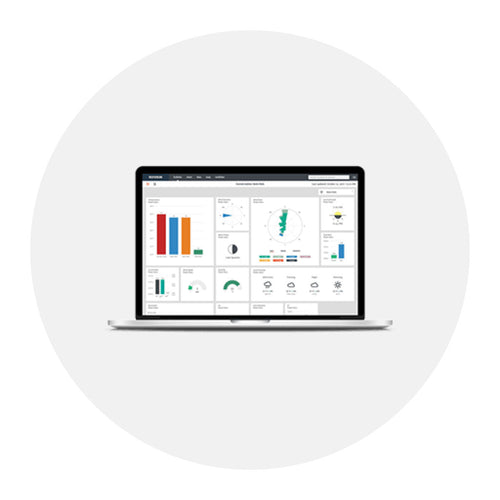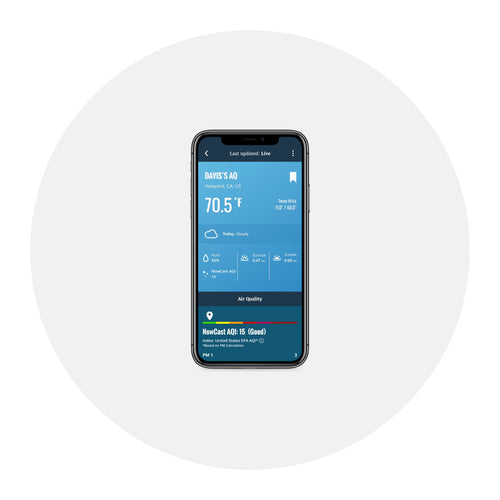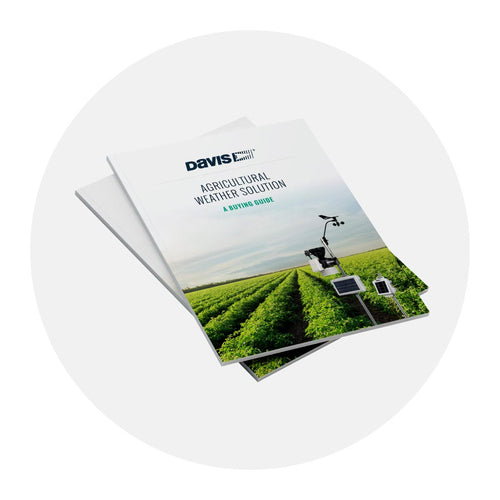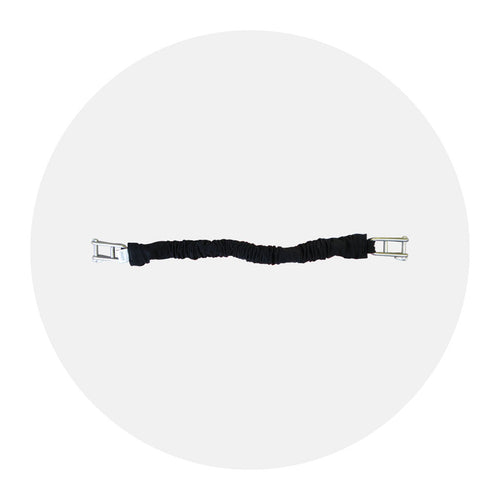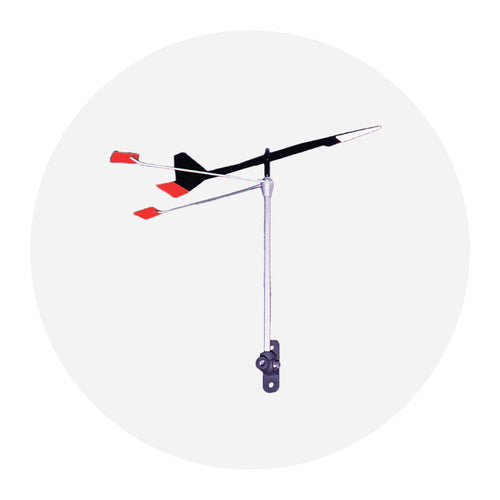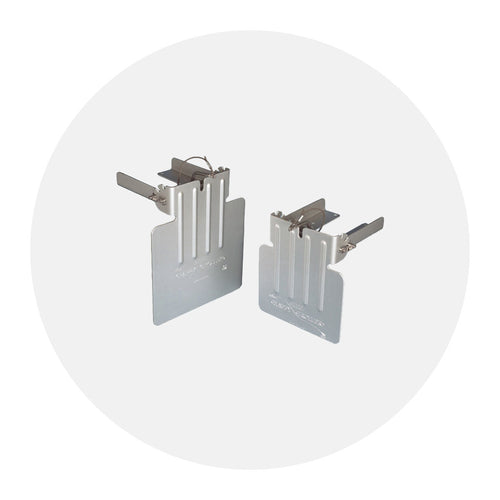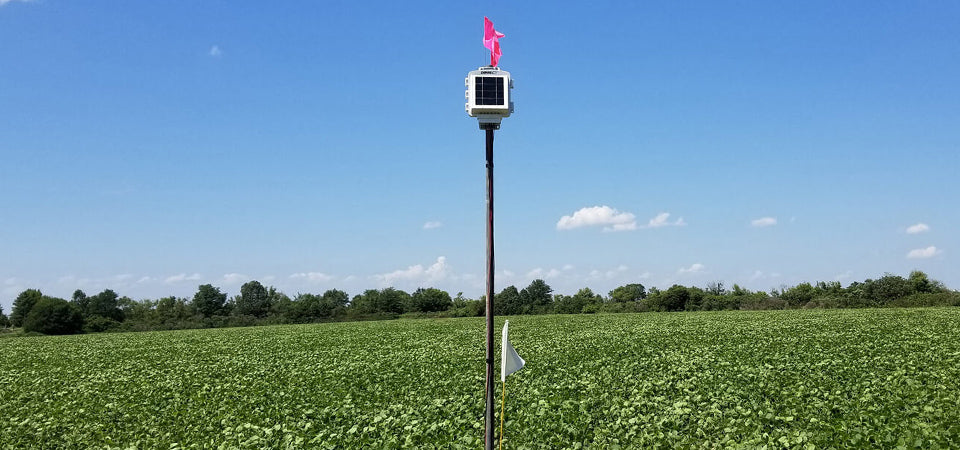
EnviroMonitor Gives Award-Winning Edge to Arkansas Farm
Matt Morris is passionate about a lot of things: his family, his 1300-acre farm in Arkansas, technology, and conserving our precious natural resources for the next generation of farmers. That combination has made him a true ambassador for the Davis EnviroMonitor system.
 Until last year, Matt along with dad Richard, grew rice, soybeans, and corn on their farm, Morris Farm, using their combined years of experience and the resources offered by their local co-op, seed companies, and weather forecasters.
Until last year, Matt along with dad Richard, grew rice, soybeans, and corn on their farm, Morris Farm, using their combined years of experience and the resources offered by their local co-op, seed companies, and weather forecasters.
Then Matt, who has never been one to fear technology, noticed other farms with Davis weather stations and decided that was just what their farm needed – very local, real-time, reliable, weather data. In researching weather stations, he discovered that Davis offers even more to growers: our EnviroMonitor system. He contacted his Davis reseller, Irrigation Mart, and quickly had his Vantage Pro2 GroWeather, EnviroMonitor Gateway and nine EnviroMonitor Nodes with soil moisture/temperature probes and flow meters up and running.
That’s when “a typical day on the Morris farm” changed forever.
“Suddenly I could just log into our account on my tablet,” Matt told us. “That was a really big deal for us. I could actually see the wind speed changing. Now our farm is connected, and it works out really, really well!”
“And now,” he went on, “we can share our data. We told our airplane pilots, our crop duster pilots and our ground-rig sprayers at our local co-op that they can just access our weather station. They can actually see wind speed if they are spraying or wanting to spray in this area. That was one of the things that were kind of a big deal for us—the ability to share our data.”
 Because of EnviroMonitor’s flexibility and the fact that the Nodes send data to each other as well as the Gateway, Matt and Richard were able to create a system that works for and can be customized to their unique farm. Like every farm, there are remote corners, trees, ponds, hills and buildings to work around. EnviroMonitor Nodes create a self-optimizing network, communicating with each other up to 4,000 feet (1,200 meters) between Nodes. The data works its way to the Gateway, then to the cloud.
Because of EnviroMonitor’s flexibility and the fact that the Nodes send data to each other as well as the Gateway, Matt and Richard were able to create a system that works for and can be customized to their unique farm. Like every farm, there are remote corners, trees, ponds, hills and buildings to work around. EnviroMonitor Nodes create a self-optimizing network, communicating with each other up to 4,000 feet (1,200 meters) between Nodes. The data works its way to the Gateway, then to the cloud.
“Expanding the network of Nodes into additional fields is easy,” Matt told us, “since every Node doesn’t need to communicate directly with the Gateway. Not all systems work like that.
“We have one Node that is up at 16 feet with the rain gauge attached. We had to get it over our corn and shoot to the field across. But other Nodes are installed much lower, at four or five feet --lower than recommended. But, especially when there is nothing in the way, such as in a rice field, we’ve had no problems!”
 “It has been such a game-changer,” Matt said. “Especially how we’d been irrigating. Before, we irrigated on a two-day rotation. We’d turn on the system, let it run two days then move to the next field. Now that I have the sensors and I am monitoring them all day, I can see how the water is moving across and how it moves down in the soil. We were totally, totally wrong – wasteful! Now I know exactly how much water I have in my crop. (I am actually even going to store water in the ground!) Before we would maybe get one inch or more rain, and I would have said, ‘well, I can shut everything down.’ But [with EnviroMonitor] when that happened, I could see the rain just kept the soil from drying. I watched the soil moisture, and instead of climbing, it just went straight. It did not add to the soil moisture. I wouldn’t have known any of this!”
“It has been such a game-changer,” Matt said. “Especially how we’d been irrigating. Before, we irrigated on a two-day rotation. We’d turn on the system, let it run two days then move to the next field. Now that I have the sensors and I am monitoring them all day, I can see how the water is moving across and how it moves down in the soil. We were totally, totally wrong – wasteful! Now I know exactly how much water I have in my crop. (I am actually even going to store water in the ground!) Before we would maybe get one inch or more rain, and I would have said, ‘well, I can shut everything down.’ But [with EnviroMonitor] when that happened, I could see the rain just kept the soil from drying. I watched the soil moisture, and instead of climbing, it just went straight. It did not add to the soil moisture. I wouldn’t have known any of this!”
Easy Installation
Matt and Richard were pleasantly surprised by how easy the system was to install.
“It was not just easy, it was fun!” Matt enthused. “Irrigation Mart offered to come out and install, but we wanted to do it. My dad and I like to stay on the edge of technology. But even for an average person, I would say it would be easy. The way the EnviroMonitor app works, I don’t see how anyone could fail at it when it shows you the wiring diagram for every sensor.” Matt often tells other growers about EnviroMonitor and has found that many hear the words “mesh network” and assume it will be a complicated installation.
I tell them, “the communication is in that Node and it’s really well built. It’s made to withstand the elements. You set it up with your phone, they talk to each other. You put it out there, and everything connects to each other and that’s it.’”

EnviroMonitor Saves Money, Resources
Matt finds that using the system is also easy, and more enlightening than he had even imagined it would be.
“WeatherLink is just so well-built. You can manually read [soil moisture] but when you are able to have it in real-time and go back and lay the rainfall or whatever over it with the graphs on WeatherLink, you can actually see exactly what is going on. It’s mind-blowing to think about how inefficiently others must be irrigating.”
This fact was never clearer than when EnviroMonitor helped Matt and Richard win the “Crop Per Drop” Arkansas Irrigation Yield Contest in rice. The basic rule of the contest: grow the most with the least. The contest, sponsored by the University of Arkansas Rice Research and Extension Center, gave farmers the chance to compete on a “level growing field” by requiring all contestants to plant thirty acres of irrigated ground, three acres of skip-patterned harvest; and a maximum of one active metered water inlet.

Matt and Richard topped every rice grower in the contest, by a very comfortable margin, growing 226 bu. per acre with a water use efficiency of 7.80 bu. per acre-inch on a meager 16 ac-in/ac of irrigation. (Non farmers, pardon our farmerese! Just know those are great numbers!)
“It was extremely hot and we didn’t have much rain at all. The contest used farm logs with everyone so it was fair, but the way the rain patterns around here are, well, we may get an inch more on the other side of our farm. Our rain and ET [evapotranspiration] data gave me an idea of how much water I was losing to evaporation. I wanted to use just enough water, not a deep flood. It was nice to have the weather station and the ability to pull up the charts and see rainfall, temperature, and ET data showing just how intense it was as far as the lack of rainfall.”
 Winning that contest with EnviroMonitor and the combination of irrigation methods has taught Matt that he can reduce his water usage by an amazing 50%.
Winning that contest with EnviroMonitor and the combination of irrigation methods has taught Matt that he can reduce his water usage by an amazing 50%.
“We’re planting more rice this year, now that we know we can grow with so much less water. Before it would take about 30-acre inches of applied water for rice; now we can do it in about 15-acre inches. We don’t use soil moisture sensors in rice fields, but we do use them in the soybean and corn fields. We’re right in the middle of this huge conservation transformation. We’re realizing how we were just guessing and now we are able to actually monitor everything. So we now know exactly what our moisture numbers are in our soil. Sometimes that means we use more water, but more efficiently with real-time monitoring. Having access to this data is a big deal.”
This water reduction translates to a very large cost reduction. Matt irrigates his rice fields with reservoir water, and, in the hottest months, with deep well water. The cost to pump the water to the field can be as high as $74 an acre. Using the methods he used in winning the “Crop Per Drop” contest, his cost dropped to $27.34/acre.
Apps Keep Data at His Fingertips
Nowadays, Matt is never more than an arm’s-length away from his field data.
“I use the bulletin constantly. I have a link on my phone. I am constantly checking my soil moistures. I login on my tablet and use the charts a lot. I overlay the air temperature and ground temperature to see when to plant corn. It’s so nice to have all these features here.”
During the growing season, Matt is always looking at his GDD data in the Mobilize app.
 “My corn seed gives me specific GDDs on the bags,” he explained. “I track GDD on the Mobilize app, looking at it every single day. Additionally, I refer to the University of Arkansas’ publication on when to terminate corn based on the starch line of the kernel. When it hit that target GDD, I went out there and looked at that kernel. That starch line was exactly where it should have been according to the publication. Now I know I can pull my phone out and say ‘alright, my Mobilize app is telling me we’re really close on GDD, that we have 10 days or less,’ then I know I don’t have to water again and I’m going to save all that water and energy costs! When it hit right on target, I was blown away. I am still blown away by how accurate it was. I know the University can track GDD for you, but I want to use MY data, not just an average.”
“My corn seed gives me specific GDDs on the bags,” he explained. “I track GDD on the Mobilize app, looking at it every single day. Additionally, I refer to the University of Arkansas’ publication on when to terminate corn based on the starch line of the kernel. When it hit that target GDD, I went out there and looked at that kernel. That starch line was exactly where it should have been according to the publication. Now I know I can pull my phone out and say ‘alright, my Mobilize app is telling me we’re really close on GDD, that we have 10 days or less,’ then I know I don’t have to water again and I’m going to save all that water and energy costs! When it hit right on target, I was blown away. I am still blown away by how accurate it was. I know the University can track GDD for you, but I want to use MY data, not just an average.”
Even outside of the growing season, Matt is still using the apps daily.
“For example, right now I check humidity daily because I am still trying to dry my rice. I wait until the relative humidity is below 50, then I turn on my fan in my grain bins. That way I don’t have to worry about using natural gas to heat the air [when the humidity is too high].”
Matt, the Davis Ambassador
“EnviroMonitor has worked out for us very, very well,” said Matt. “I am looking forward to adding more Nodes and sensors. I want to monitor the whole farm. We are at least halfway there now.”
His experience with EnviroMonitor and Davis’s reputation for quality and accuracy has made him into an EnviroMonitor Ambassador. He tells his neighbors and other growers how much it has helped him on his farm. He even demonstrated it at his son’s fifth-grade “Career Day.”

The Bottom Line: Conservation
The part of farming that Matt is most passionate about is the future of the farming world his three sons will inherit.
“For me saving money is always a priority. But more, I am conserving precious natural resources that are not promised forever. I am seeing wells going dry all around us. What do you do when your well runs dry? If any of my boys want to farm, I want to make sure I do whatever I can do to make sure they can. Taking advantage of technology like EnviroMonitor matters. It makes such a huge difference not just for now but down the line.”
 EnviroMonitor is proving itself in fields like the Morris’s to be the key to taking guesswork out of the formula for highest yields with the least use of resources. It is making the bottom line not just dollars, but a future where growers can continue to feed an increasing population.
EnviroMonitor is proving itself in fields like the Morris’s to be the key to taking guesswork out of the formula for highest yields with the least use of resources. It is making the bottom line not just dollars, but a future where growers can continue to feed an increasing population.
You can learn more about EnviroMonitor here.
In the face of escalating environmental risks, AEM is the essential source for insights on weather, climate, lightning, floods, wildfires, water management, and more.
Learn more about AEM and all of our solutions here.





